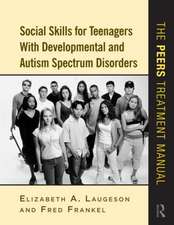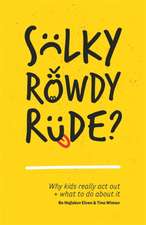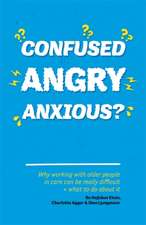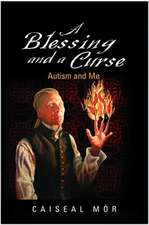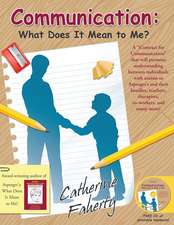No Fighting, No Biting, No Screaming
Autor Bo Hejlskov Elvenen Limba Engleză Paperback – 14 sep 2010
Preț: 116.10 lei
Preț vechi: 146.92 lei
-21% Nou
Puncte Express: 174
Preț estimativ în valută:
22.22€ • 23.28$ • 18.37£
22.22€ • 23.28$ • 18.37£
Carte disponibilă
Livrare economică 21 martie-04 aprilie
Livrare express 07-13 martie pentru 48.57 lei
Preluare comenzi: 021 569.72.76
Specificații
ISBN-13: 9781849051262
ISBN-10: 1849051267
Pagini: 240
Ilustrații: black & white illustrations, figures
Dimensiuni: 152 x 228 x 20 mm
Greutate: 0.39 kg
Editura: Jessica Kingsley Publishers Ltd
Locul publicării:United Kingdom
ISBN-10: 1849051267
Pagini: 240
Ilustrații: black & white illustrations, figures
Dimensiuni: 152 x 228 x 20 mm
Greutate: 0.39 kg
Editura: Jessica Kingsley Publishers Ltd
Locul publicării:United Kingdom
Notă biografică
Bo Hejlskov Elvén is a Clinical Psychologist based in Sweden. He is an independent consultant and lecturer on autism and challenging behaviour, and an accredited Studio III trainer. In 2009, he was awarded the Puzzle Piece of the Year prize by the Swedish Autism Society for his lecturing and counselling on challenging behaviour.
Cuprins
Introduction. 1. Challenging Behaviours: Definitions and Theories. What is challenging behaviour? Dangerous behaviour? Or just difficut? Throwing the blame on somebody else. History: Theories and therapies. A new outlook. Background to our conceptions. Summary. 2. Conceptions and Misconceptions. The importance of self-control. Methods for changing behaviour. Consequence and structure. Conceptions of the causes of behaviour. Summary. 3. Adjustment of Demands. Methods of adjusting demands. Ability to respond to demands. Summary. 4. Stress Factors: A Model for Explaining Chaos. The effects of stress. Basic stress factors. Situational stress factors. Warning signs. Signs of chaos. Protective or calming factors. Summary. 5. When Conflict Happens: Keeping it Calm. Theories of affect and emotion contagion. The low-arousal approach. Creating diversions. Confrontation or intervention? Conflict -seeking service-users. Summary. 6. Looking to the Future. Fundamental principles. Leaving the past behind. References. Index.


